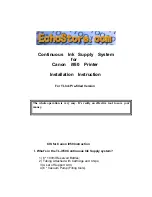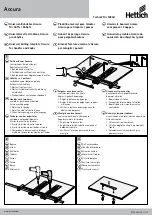
Terminal Connections
(
continued
)
The Alarm & Warn relay connections vary
according to their normal state. The tables
below indicate the correct normally open
(NO) and normally closed (NC) contacts:
Alarm Relay - Normally Energized:
TB2 position
Relay Contact
1
Normally Open
2
Common
3
Normally Closed
Alarm Relay - Normally De-Energized:
TB2 position
Relay Contact
1
Normally Closed
2
Common
3
Normally Open
Warn Relay - Normally Energized:
TB2 position
Relay Contact
4
Normally Open
5
Common
6
Normally Closed
Warn Relay - Normally De-Energized:
TB2 position
Relay Contact
4
Normally Closed
5
Common
6
Normally Open
Fault Relay - Normally Energized:
TB2 position
Relay Contact
7
Normally Open
8
Common
9
Normally Closed
The Fault Relay is always Normally
Energized and Non-Latching.
Inductive loads (bells, buzzers, relays, etc.) on
dry relay contacts must be clamped down
(figures 9 and 10). Unclamped inductive
loads can generate voltage spikes in excess of
1000 volts. Spikes of this magnitude may
cause false alarms and contact damage.
fig ure 9
fig ure 10
NOTE: Contact with PCB components
should be avoided to prevent damage by
static electricity. All wire connections
are made to the Terminal Blocks.
It is recommended that a three wire (red,
black, white) shielded cable be used for
making power and signal connections on
the Model S216A. See Appendix, section
5.4. The terminal block accepts 16 AWG
to 22 AWG stranded or solid wire. Each
wire should be stripped before wiring the
Model S216A Enhanced Smart Sensor.
Installation
General Monitors
10
Содержание S216A
Страница 3: ...anytime the system power is off for more than an hour ...
Страница 7: ...2 General Monitors ...
Страница 11: ...6 General Monitors ...
Страница 19: ...General Monitors 14 ...
Страница 31: ...26 General Monitors ...
Страница 34: ...29 Model S216A Appendix fig ...
Страница 35: ...5 2 Engineering Documentation 5 2 1 Termination Outline Drawings 30 Appendix General Monitors fig ...
















































